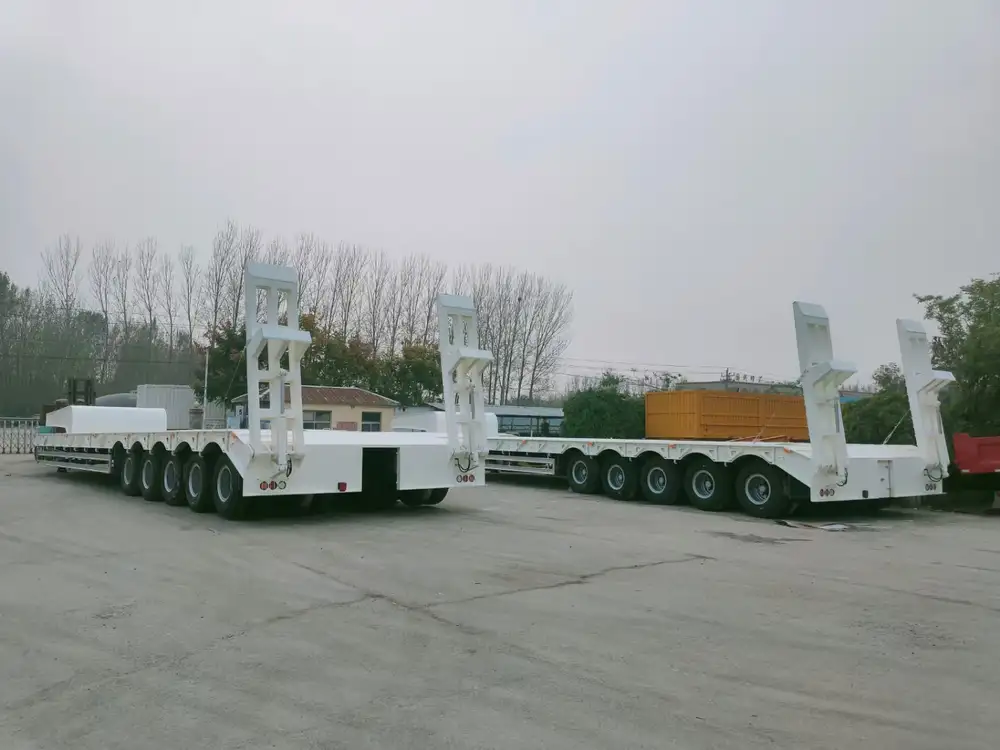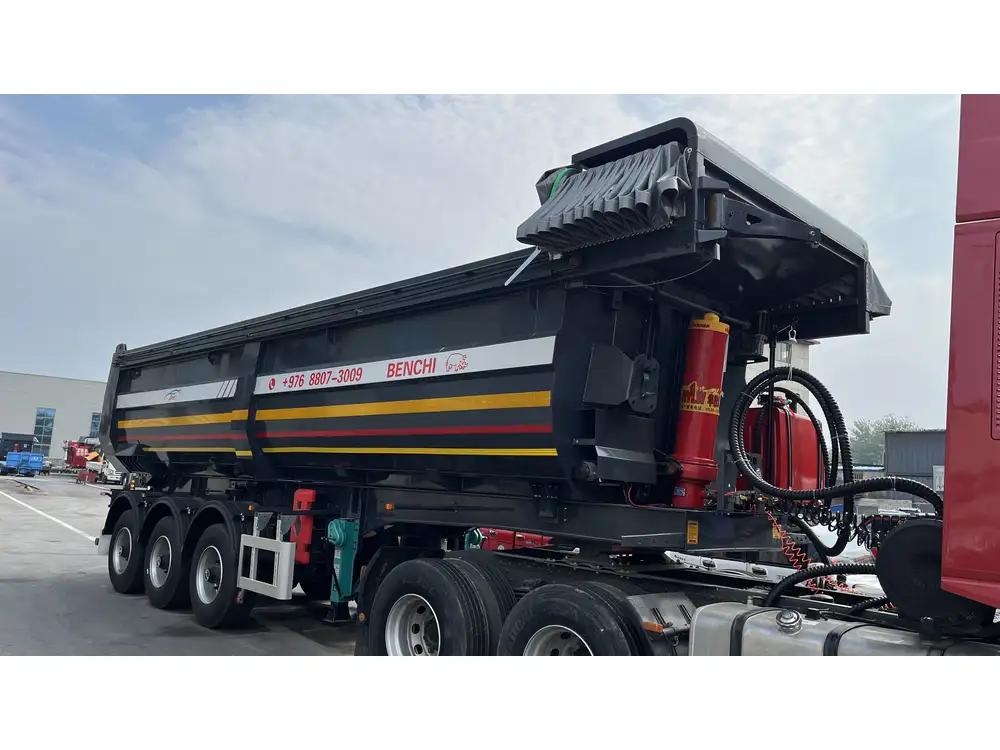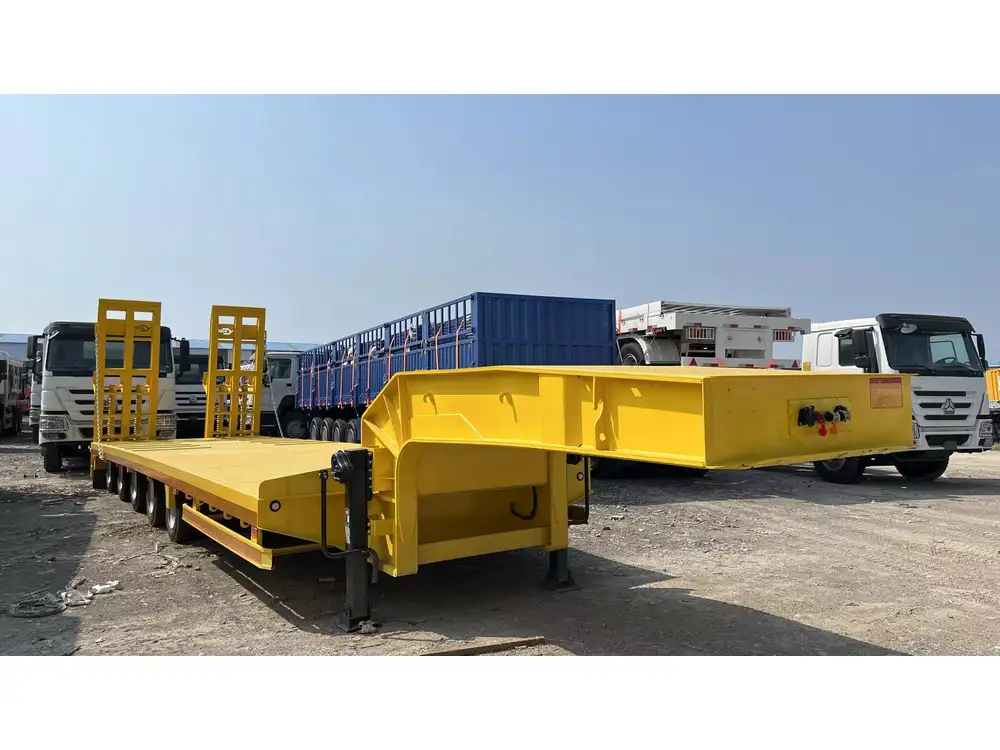Transporting large loads requires precision, technique, and the right equipment. Among the vehicles designed for heavy-duty hauling, semi-trucks combined with gooseneck trailers are particularly effective. Understanding how to pull a gooseneck trailer with a semi safely and efficiently can greatly enhance operational performance. In this guide, we’ll explore essential techniques, equipment checklists, and safety protocols for mastering this task.
1. Understanding Gooseneck Trailers
Gooseneck trailers are characterized by their distinctive hitching mechanism, which consists of a long neck that extends over the truck’s bed, allowing for secure connections. This design enhances stability during transit, especially with heavy loads. Here are the key types:
| Type of Gooseneck Trailer | Description |
|---|---|
| Flatbed | Ideal for transporting bulky items without sides or a roof |
| Enclosed | Provides protection from weather and theft |
| Livestock | Specially designed for transporting animals |
| Car Hauler | Equipped to carry multiple vehicles securely |
Advantages of Using a Gooseneck Trailer
- Weight Distribution: The weight is distributed effectively, reducing stress on the towing vehicle.
- Increased Stability: Longer wheelbase allows for better handling and maneuverability.
- Higher Weight Capacity: Gooseneck trailers typically can carry heavier loads than bumper-pull trailers.

2. Equipment Needed for Towing a Gooseneck Trailer
Semi-Truck Considerations
Not just any truck can pull a gooseneck trailer effectively. Here’s what to consider:
| Feature | Importance |
|---|---|
| Towing Capacity | Ensure your semi can handle the trailer’s weight |
| Hitch Type | Requires a compatible gooseneck hitch |
| Powertrain | A robust engine aids in smooth towing |
Essential Gear Checklist
Before venturing out, check this gear list to ensure a safe hauling experience:
- Gooseneck Hitch: A high-quality gooseneck hitch properly installed.
- Brake Controller: Ensures smooth braking for both the truck and trailer.
- Safety Chains: Must be used as backups for hitch connections.
- Spare Tire: Always carry a spare to deal with unforeseen circumstances.
- Basic Tool Kit: For on-the-road adjustments or repairs.

3. Preparing to Haul: Pre-Towing Steps
Preparation is key to a successful haul. Follow these steps to ensure everything is in order before hitting the road.
3.1 Inspection of the Gooseneck Trailer
Before loading your trailer, perform a thorough inspection:
- Tires: Check for appropriate inflation levels and tread wear.
- Brakes: Test functionality to ensure they respond adequately.
- Lights: Ensure all lights are operational, including turn signals and brake lights.
- Load Security: Make sure the load is properly secured and balanced.
3.2 Inspecting the Semi-Truck
Your semi plays a critical role in towing effectiveness. Conduct the following checks:
- Fluid Levels: Check engine oil, coolant, and brake fluid levels.
- Electrical System: Ensure trailer connections are functional.
- Transmission: Make sure it is in excellent working condition to withstand heavy loads.

4. Hitching the Gooseneck Trailer Properly
Achieving a correct hitch setup is non-negotiable for safety and performance. Here’s how to hitch a gooseneck trailer successfully:
Steps to Hitch
- Align the Truck and Trailer: Position the semi alongside the trailer.
- Lower the Hitch: Raise the trailer’s gooseneck with the jack until it meets the hitch.
- Lock the Hitch: Securely lock the gooseneck to the hitch with the pin.
- Attach Safety Chains: Cross-check the safety chains to reduce droppage risk.
- Connect Wiring: Plug in the electrical harness for lights and brakes.
5. Driving Techniques for Pulling a Gooseneck Trailer
Towing a gooseneck trailer demands unique driving strategies to maintain control. Consider the following driving practices:

5.1 Speed Adjustment
- Maintain a Steady Pace: Avoid abrupt acceleration and deceleration. Maintain a consistent speed for stability.
- Reduce Speed on Turns: Slowing down at corners enhances control and reduces the risk of tipping.
5.2 Handling Turns
- Extra Wide Turns: Gooseneck trailers require wider turning radii. Watch out for trailing vehicles or obstacles.
- Practice Counter Steering: Be prepared to adjust your steering when the trailer sways.
5.3 Braking Techniques
- Use Engine Braking: Engage the engine brake when going downhill to prevent overheating the brakes.
- Gradual Braking: Avoid sudden stops; instead, brake gradually to maintain control.

6. Safety Protocols during Transport
Safety should always be a priority. Here’s how to ensure a risk-free towing experience:
6.1 Adhere to Weight Limitations
Understand the legal loading limits for both your semi and trailer. Exceeding these limits can lead to dangerous situations, including:
- Increased Stopping Distance: Heavier loads require more time to stop safely.
- Tire Blowouts: Overloading can cause tire damage.
6.2 Monitor Weather Conditions
Road conditions can significantly affect towing safety. Consider implementing these strategies:
- Check Weather Reports: Prior to departure, forecast potential storms or high winds.
- Adapt Driving Behavior: Be extra cautious during adverse weather—reduce speed, increase following distance.

6.3 Maintain Clear Visibility
Driving with a trailer reduces rear visibility. Use these tactics:
- Adjust Mirrors: Ensure your mirrors are positioned for optimal rear view.
- Use Spotters: When reversing or maneuvering in tight spaces, use a spotter to avoid accidents.
7. Common Challenges and How to Overcome Them
Even with preparation and care, challenges can arise during transport. Here’s a guide on common issues and solutions:
7.1 Swaying of the Trailer

Causes
- High winds, improper load distribution, or sudden maneuvers.
Solutions
- Slow Down: Reduce speed if you feel the trailer swaying.
- Adjust Load: Stop and redistribute weight if necessary.
7.2 Difficulty in Braking

Causes
- Heavy loads or towing at excessive speeds.
Solutions
- Use Brakes Sparingly: Rely more on engine braking to manage speed.
- Inspect Brake Systems: Regularly check trailer brakes and ensure responsiveness.
7.3 Hitch Issues

Causes
- Improper installation or wear and tear.
Solutions
- Regular Inspections: Conduct regular checks of the hitch assembly and safety features.
- Seek Professional Help: If issues persist, consider consulting towing specialists.
8. Post-Trip Considerations
After arriving at your destination, here are important steps to take:

8.1 Unhitching Properly
- Park on Level Ground: Find a flat surface for secure unhitching.
- Lower the Trailer: Use the jack to lower the trailer onto the ground.
- Disconnect Components: Safely unhook the hitch, wires, and chains.
8.2 Perform Post-Trip Inspection
Conduct a thorough inspection post-trip:
- Check for Tire Damage: Inspect for any wear or potential issues.
- Assess Load Integrity: Confirm that the load was secure throughout transport.
Conclusion: Mastering the Art of Towing Gooseneck Trailers
Successfully pulling a gooseneck trailer with a semi-truck hinges on understanding the equipment, preparation, precision in driving, and adherence to safety practices. By mastering these elements, you can ensure a more efficient, safer, and smoother hauling experience.
Incorporate these best practices into your operations to enhance performance and minimize risks. Whether you’re transporting livestock, equipment, or vehicles, the knowledge you gain here will be invaluable to your success. Ultimately, creating a culture of safety and diligence in your towing operations not only protects your assets but also ensures the job is done right.
For further information, training resources, or advanced safety protocols, please consider reaching out to industry experts or attending specialized workshops.



